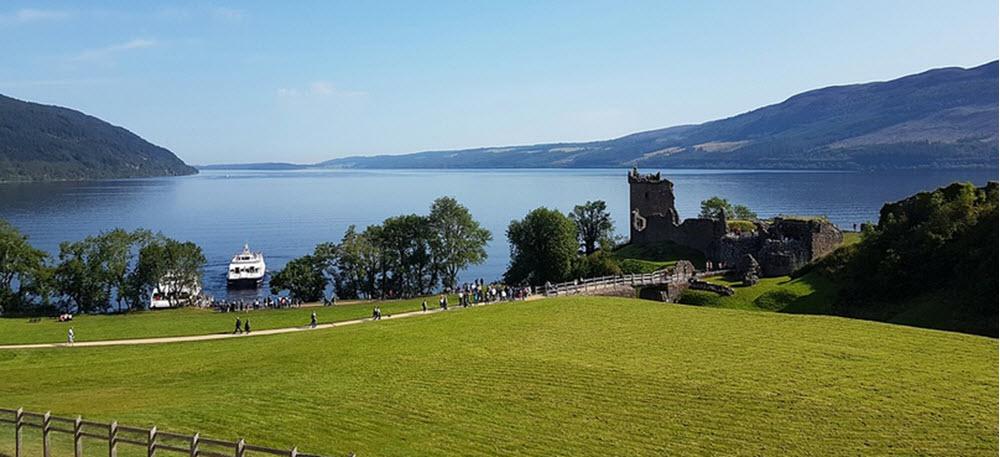Loch Ness or Loch Nis as the lake is called in Scottish Gaelic is a large freshwater lake.
It is located in the Scottish Highlands. The lake is named after the river Ness which flows from the northern end.
Loch Ness is best known for the stories and observations of the alleged Loch Ness monster, Nessie. In Scottish Gaelic, the sea monster is called Niseag. The water in Loch Ness consists of many turbid watercourses that are interconnected. The poor visibility in the water is due to the high content of peat in the soil around the lake.

The River Oich and the Caledonian Canal connect the southern part of Loch Ness with Loch Oich. The river Ness connects the northern part of Loch Ness with Loch Dochfour. Finally, it leads out to the North Sea via the Moray Firth.
In terms of surface, Loch Ness is the second largest Scottish lake. Loch Lomond is the largest. Loch Ness is 56 km2 in size. However, Loch Ness is much deeper, which means that the volume is much larger and that makes it the largest lake in terms of volume in the UK. The deepest is 230 meters. However, the deepest lake in Scotland is Loch Morar. Loch Ness contains more water than all the lakes in England and Wales combined.
The lake surface is 16 meters above sea level. In Loch Ness there is only one island. It is artificial and is called Cherry Island. In Scottish Gaelic it is called Eilean Muireach. It is located at the southwestern end of the lake. Cherry Island is located near Fort Augustus.
It is an artificial island, known as a crannog, and was probably built during the Iron Age.
A crannog is typically a partially or entirely artificial island, usually built in lakes and estuarine waters of Scotland, Wales, and Ireland.
Previously, there was a second island, Dog Island. During the construction of the Caledonian Canal, the water level was raised so much that it is now submerged under water.
Around the lake there are nine villages around the lake.
Some of the native fish species in Loch Ness are: European eel, Northern pike,
European sea sturgeon, Three-spined stickleback, Brook lamprey, Eurasian minnow, Atlantic salmon, Sea trout, Brown trout and Arctic char.
Perch and rutilus roach have been introduced in the Loch Ness and Caledonian Canal with varying levels of success.
The landowners next to the lake own the fishing rights for trout from their shore out to the middle of the lake. You always need written permission to fish for trout in Scotland, whether from bank or boat.
In 1952, John Cobb tried to reach the speed record at Loch Ness when his boat crashed. The people of Glenurquhart erected a memorial to him near the lake.
On August 31, 1974, David Scott Munro became the first person in the world to water ski along Loch Ness. From Lochend to Fort Augustus and back took him 77 minutes at an average speed of 60 km/h.
In 1966, Brenda Sherratt became the first person to swim along the lake. It took her 31 hours and 27 minutes.